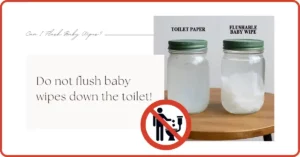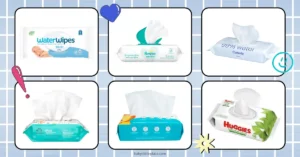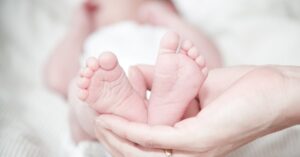Welcoming a new member into the family comes with many decisions for parents to make. One of the most crucial choices is selecting the right bed for the baby. As parents strive to create a safe and comfortable sleep environment, experts weigh in on the options available – cribs, Playards (Pack ‘N Plays), bassinets, or sharing the bed with your baby.

Expert Recommendations for Baby Bed
The American Academy of Pediatrics (AAP) recommends that babies sleep in the same room as their parents but not in the same bed. It’s important to have a separate bed for your baby!
The AAP recommends a crib, a Playard (Pack’ N Play), or a bassinet as safe options. Furthermore, according to their guidelines, you should keep your baby’s bed in your room for at least the first six months of their life, and preferably for a year.
Although a crib may seem a little big for a newborn, I think it’s the most rational and safest choice! Let me explain. The crib is the sturdiest and most durable choice. It is also a more long-term solution than a bassinet and a more appealing option than a Pack ‘N Play. Basically, it saves you money in the long run.
But on the end of the road, regardless of which bed you choose (crib, Pack ‘N Play, or bassinet), it is important to ensure that it complies with the latest safety standards. However, selecting the right bed is not the only factor in ensuring a safe sleeping environment for your baby.
It is crucial that you also follow the recommendations for safe baby sleep. This is the only way you can be sure that you have done everything in your power to provide the safest sleeping environment for your baby.
Best Baby Beds
1. Crib: The Gold Standard for Safety
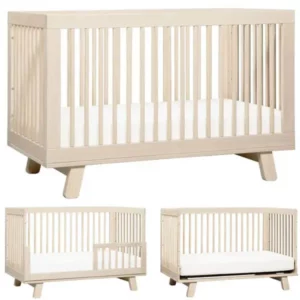
Babyletto Hudson 3-in-1 Convertible Crib with Toddler Rail
Experts widely agree that a crib is the safest sleep space for babies. The American Academy of Pediatrics (AAP) recommends placing infants on their backs to sleep in a crib with a firm mattress and no soft bedding.
Cribs provide a secure and confined space, reducing the risk of accidental suffocation or Sudden Infant Death Syndrome (SIDS).
If you’re buying a new crib in the United States, you can rest assured that it is safe to use. This is because the Consumer Product Safety Commission (CPSC) has established rigorous safety standards that all cribs available in the market must comply with.
Some of the key features of a safe crib include slats that are no more than 2 3/8 inches apart to prevent entrapment, the absence of drop-side rails, which can pose safety hazards, and a durable mattress supports.
RELATED: Best baby cribs in 2024
2. Playard (Pack ‘N Play): Versatile Bed for Babies
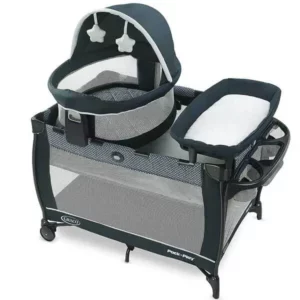
Graco Pack ‘n Play Travel Dome LX Playard
Playards, also known as Pack ‘N Plays, are multi-functional sleeping and play areas that can be easily set up or folded down. They are portable and ideal for families who have limited space or those who are always on the go. However, it is important to choose a model that conforms to safety guidelines.
Experts recommend that Playards should provide a firm and flat surface for sleeping, a sturdy frame, and breathable fabric. It is also important to ensure that any extra features, such as bassinet attachments or changing stations, comply with safety regulations.
Although Playards are convenient, they may not be as appealing as cribs. They are also not the best long-term sleeping solution as compared to cribs.
RELATED: Best Pack ‘N Plays in 2024
3. Bassinet: Cozy and Convenient Baby Bed for Early Months

Bassinets are often recommended for the first few months of a baby’s life. These smaller sleep spaces provide a cozy environment for newborns and are usually more portable than cribs.
However, it’s crucial to transition to a crib once the baby outgrows the bassinet to ensure continued safety.
Experts advise parents to choose a bassinet with a stable base, breathable sides, and a firm mattress.
Keep in mind that bassinets are intended for short-term use, as babies quickly outgrow them and may become more mobile, posing potential safety risks.
RELATED: What Is The Best Type Of Baby Bassinet?
4. Co-Sleeping: Benefits and Risks
Sharing a bed with your baby, also known as co-sleeping or bed-sharing, is a practice that garners mixed opinions from experts. While some studies suggest potential benefits, such as increased bonding and easier breastfeeding, the AAP advises against bed-sharing due to safety concerns.
Experts caution that sharing a bed increases the risk of accidental suffocation, entrapment, and SIDS. If parents choose to co-sleep, guidelines recommend placing the baby on a separate sleep surface within arm’s reach, such as a bedside bassinet. This allows for close proximity without the inherent risks associated with bed-sharing.
Conclusion:
Selecting the right bed for your baby involves careful consideration of safety, comfort, and practicality.
Experts consistently recommend cribs as the safest option for long-term use. However, Playards and bassinets are also considered safe and versatile alternatives for specific needs.
While co-sleeping may have potential benefits, it’s crucial to prioritize safety. If you decide to do so, follow expert guidelines to create a secure sleep environment for your little one.

